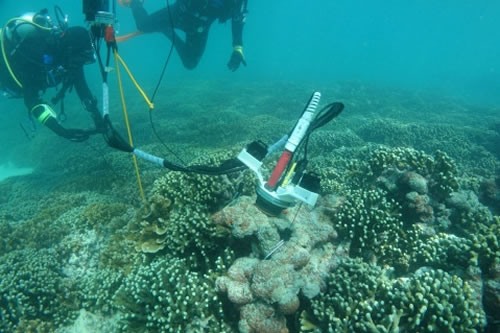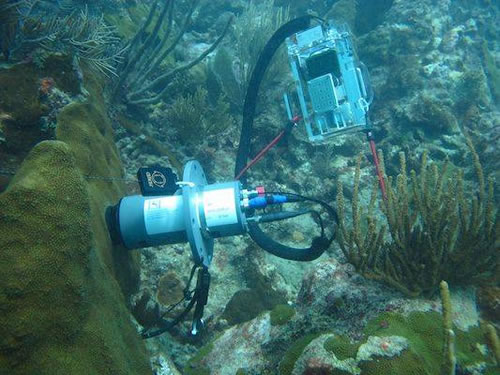Underwater in situ measurement of corals, low-amplitude benthic organisms, seaweed groups, sponge fragments, and in situ measurements of submerged plants, large seaweeds, corals, etc. are essential.


Design highlights • Separate relatively small volumes of water samples to facilitate the determination of pH and DO changes in specific time periods • The water flow velocity keeps the water sample well mixed to minimize stagnation of the boundary layer • Light control (switch and light level settings) •Measure photosynthesis and respiration to produce photoresponse curves • Collect water samples for laboratory analysis • Additives such as photosynthesis inhibitors can be added for control tests (control group)

instrument design • Electronic warehouse:It contains host electronic devices, network cards, digital processing and storage devices, etc., with a maximum water tolerance of 70m. •Hatching head:Includes sensors, pumps, LED light sources and special traction devices for connection to coral/substrate surfaces. • Instrument operation:CISME is connected to an underwater Android tablet via a network cable and operates through a dedicated Android application system. • Diving:Lightweight, the equipment and underwater flatbed is 5-7 pounds underwater, making it easy for divers to carry. applications • Physiological and ecological research • Environmental monitoring • Natural Resources Protection • Global warming • Ocean acidification\Oxidation What is IT used for? • Benthic organisms or other substrates • Corals and benthic algae • Microbial membranes and sediments •Sponge, invertebrates • other Related video QR code • CIS me • diving-Pam



For more information or to request product information, please click:Request information for free.